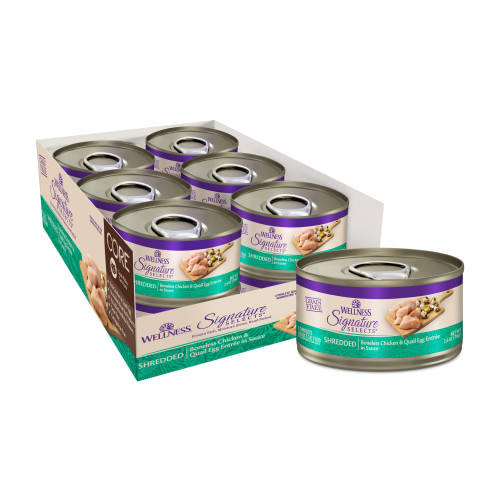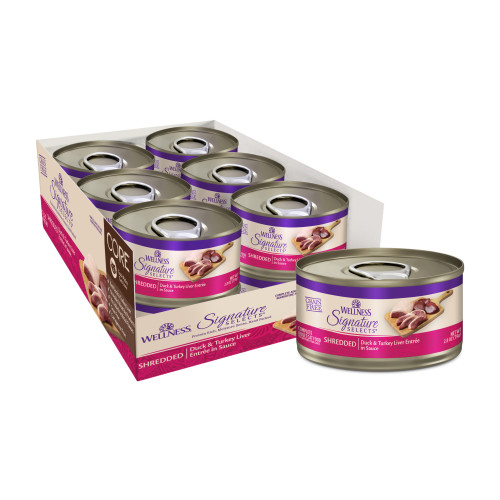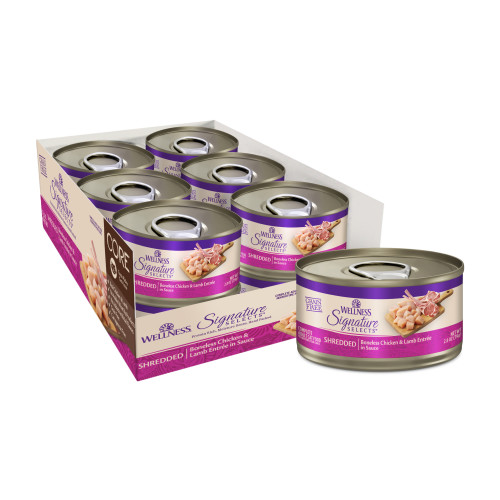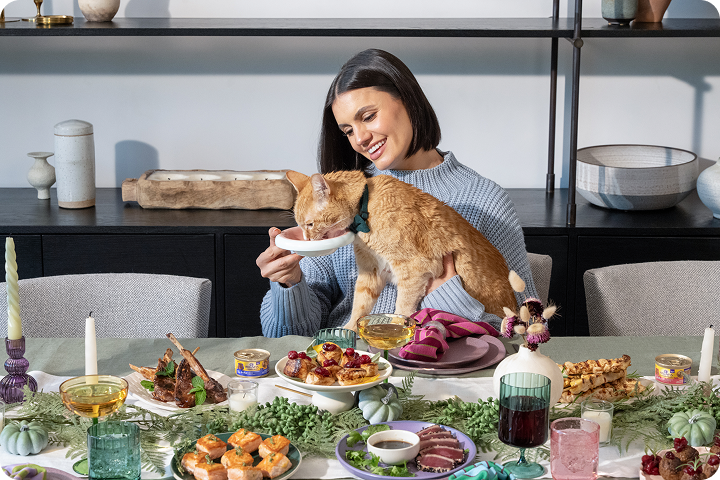August 11, 2020
My Cat Doesn’t Eat Dry Food: 6 Ways to Make Mealtime Fun
My cat doesn’t eat dry food
Are you a pet owner that thinks, “My cat doesn’t eat dry food?” Think again! If you’d like to incorporate more dry food into your cat’s nutritional plan, here are six easy ways to create some fun during meals by taking advantage of the stability of dry food and your cat’s natural instinct as a hunter. Time to play!
1. Plastic Water Bottle Fun
This is a very basic and easy way to create a puzzle feeder. If you’re unfamiliar with this term, a puzzle feeder is simply a food-dispensing toy. The cat manipulates the toy and she’s rewarded with food. Puzzle feeders are becoming more popular for many reasons. Whether it’s to help a cat eat slowly, combat boredom, or just for fun, puzzle feeders are a natural fit for an animal who is born to hunt. Chances are, you already have some water bottles at home, so here’s a way to re-purpose them for your cat’s enjoyment.
Take a small, empty water bottle that is completely dry and carefully cut some holes in it. The holes should be larger than the size of a piece of dry food. To help your cat understand the concept, make the holes big and create many of them. After the holes are cut, put some pieces of dry food in the bottle and put the cap back on. Put the bottle on the floor and lay it on its side. When your cat walks by, she may detect the food aroma and paw at the bottle to release a few pieces. If she doesn’t get the idea, you can help her by gently rolling the bottle yourself so she sees what happens as it moves.
As she gets better at the water bottle technique, you can create other bottles with fewer holes to make it more interesting.
2. Try More Challenging Puzzle Feeders
You can buy puzzle feeders online or at your local pet product store. There are many types to choose from, based on your cat’s skill level. Some cats will only stay interested if the game is easy but others enjoy a challenge. Look for puzzle feeders that match your cat’s level so you don’t create frustration. Some are designed with compartments and sliding lids that require the cat to slide the top open to retrieve the food reward. There are many options, so it should be easy to find the perfect one for your cat. Choosing a nutritional dry food with an appealing aroma, such as Wellness Complete Health Adult with Wholesome Grains: Salmon & Salmon Meal, will help pique interest!
Since cats love to explore and hunt, you can increase daily fun by locating puzzle feeders around the house. If your cat shares her home with a dog, be sure to only place puzzle feeders in areas the dog can’t access.
3. Treasure Hunts
If your cat doesn’t take to puzzle feeders or you want to try something more basic, simply create food treasure hunts. Hide dry food around your cat’s areas for her to discover during the day. A few little pieces on a perch of her cat tree, and a couple pieces by the window or near her favorite napping location may add a little spark to her day as she comes across these unexpected bonuses.
4. Hunting: A Natural Instinct
In an outdoor setting where a cat would have to depend on her hunting skills for food, she must first go through the ritual of seeking, stalking, pouncing and capturing her prey. Food isn’t just lounging around, making itself readily available for lunch or dinner. Let your indoor cat enjoy the natural process of “hunting” through interactive playtime and then offer her the food reward for being the Mighty Hunter.
Use an interactive toy (this is based on a fishing pole design) and move the toy like prey so your cat’s natural instincts will take over. Don’t wave the toy in your cat’s face, but rather, create interest by imitating the movements of prey. Alternate between in-the-air moves and on-the-ground motions, as well as keeping the toy still for a bit so your cat can plan and stalk. Hunting/playtime is just as much mental ability as physical skill, so let your cat show you how accomplished she is at both of those.
After the game is over, offer her the well-deserved reward. The feast after the hunt is a natural ending for a job well done.
5. Clicker Training
Cats are smart, but you know that already, don’t you? You’ve seen that in your own cat on a daily basis so why not use that intelligence to teach your cat some fun behaviors? You can train your cat to sit, high-five, or any number of behaviors and tricks. Clicker training is a common and effective training technique that creates a language between cat and cat parent. A clicker is used to make a unique sound, signaling or marking a wanted behavior. The clicker becomes the bridge or secondary reinforcer between the behavior and the delivery of food (food is the primary reinforcer).
You can use treats for rewards during clicker training but you can also use pieces of dry food. If your cat is overweight or you don’t want to increase your cat’s calorie intake, divide up her normal daily dry food portion and take a small amount of that to use for clicker training.
You can find instructions for clicker training online. The Jackson Galaxy Project and Catster are both reputable sources when it comes to learning this type of training. It’s an easy method and is very helpful in working with behavior problems as well as being a fun way to give your cat something to do. Clicker training is also a great way to bond with a cat. Clicker training should be fun so if you try this, don’t frustrate her and keep the whole experience positive.
6. Create an Appealing Environment
It doesn’t have to be wildly exciting or stimulating, but maybe your cat’s mealtime environment needs a little sprucing up. Make sure the feeding station is clean, comfortable and safe. Don’t leave dry food out so long that it becomes stale and be sure to regularly wash the food bowl. If your cat shares her home with a dog or maybe there are young children who love to be around while she eats, consider placing her feeding station in an elevated location. She might like to look out the window while she eats or maybe she would prefer a quiet spot where no one will bother her. Sometimes just a little tweaking of her meal environment is all that is needed.
Lastly, don’t be discouraged if you try one or two of these methods and your cat remains uninterested in dry food. Adapting to what your cat likes best will be the key to success when it comes to incorporating dry food into her diet.







